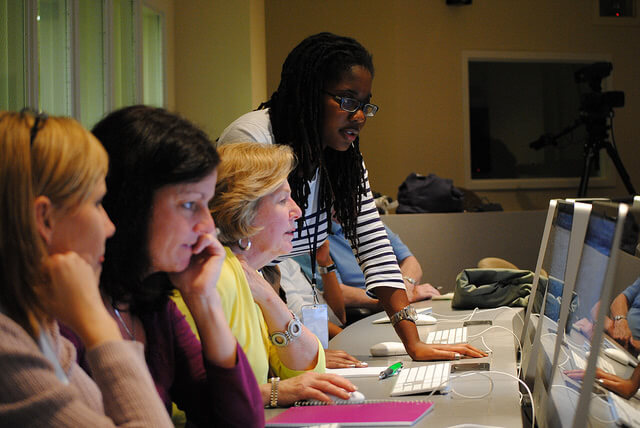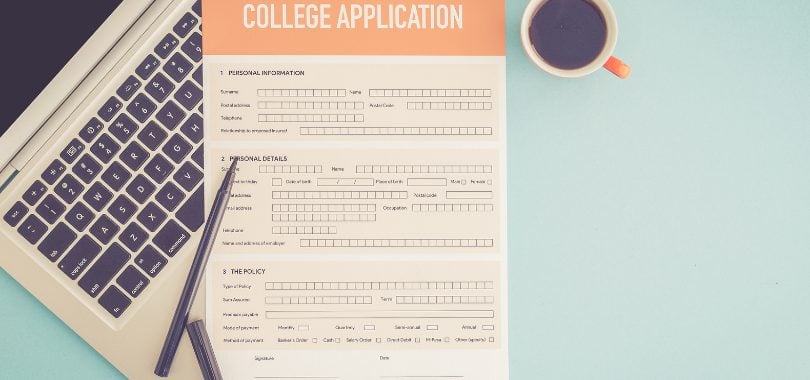There are students who think they won’t get financial aid from the federal government. Therefore, they sometimes don’t see the point in filing the FAFSA (Free Application for Federal Student Aid). However, these students don’t realize that they may be missing out on grants and scholarships from their college. They’re even missing out on low-interest-rate federal student loans. Even families making more than $100,000 should still fill out the FAFSA.
Unless you are planning to pay full sticker price out of pocket for college (and you don’t mind), it is almost always a good idea to fill out the FAFSA.
Why Should You Fill Out the FAFSA?
 Whether you think you make too much to qualify for grants or you’ve known someone who filled out the FAFSA and didn’t receive anything, you should still submit yours. Here are three important reasons why:
Whether you think you make too much to qualify for grants or you’ve known someone who filled out the FAFSA and didn’t receive anything, you should still submit yours. Here are three important reasons why:
1. The US Department of Education Offers More Than Loans
The Department of Education (DOE) hands out more than just federal student loans. The FAFSA puts you in the running for the Pell Grant, work study programs, and other federal grants.
Pell Grant is given to families who fall below a certain gross income threshold. Award amounts and eligibility requirements change each year. The money is awarded on a scale. The lower your income, the more money you’ll receive from the grant.
If you demonstrate financial need and your school has enough funding, you could also qualify for the Federal Work-Study program. You’ll earn money on campus or with a partner business to put towards your expenses.
The DOE also hands out the Federal Supplemental Educational Opportunity Grant (FSEOG) and the Teacher Education Assistance for College and Higher Education (TEACH) Grant.
And, of course, there are federal student loans. While you’ll need to pay these back, they have lower interest rates than private student loans. You’ll even have access to more borrower protection and benefits, such as deferred payments after graduation, income repayment plans, and longer default periods.
2. The FAFSA Is Used by Schools
The FAFSA isn’t only used by the federal government. Colleges, universities, and other institutions actually use the FAFSA to determine financial aid packages, as long as you let the government know you want your information released to the school. You can list up to 20 institutions at a time.
Many schools have endowment programs, grants, and scholarships to help students who have demonstrated need. Some are even financial and merit-based awards. You can’t apply to these without submitting the FAFSA.
The institutions use applicants’ Student Aid Index (SAI) from the FAFSA to determine financial need. If you’re accepted, you might receive a very generous financial aid package. Their thresholds are usually much higher than the federal government. So even if you didn’t qualify for the Pell Grant, you might still qualify for a school specific scholarship or grant.
3. The FAFSA Is Used by States
Most states also have their own scholarship and grant programs, and you often can’t apply for these unless you complete the FAFSA each year. Some locations have their own financial aid applications that need to be completed with or instead of the FAFSA, so be sure to check out any award requirements as soon as possible.
State grants can and do run out of funds often. Alaska, for example, recommends you submit your application as soon as you can because one of their programs runs out of money quickly.
Why Should You Fill Out the FAFSA Every Year?
Another common pitfall students and families fall into is not realizing that they should complete the FAFSA every year – even if they didn’t receive any offers the year before! Income requirements and school financial aid programs are constantly changing. You might be eligible for something next year even if you weren’t last year. You won’t know unless you try.
Some awards are renewable. If one of the qualifiers is “demonstrated financial need,” you might not be able to renew the scholarship if you fail to complete the FAFSA.
Submit the FAFSA ASAP
The FAFSA takes just a few moments, but delaying it could cost you thousands of dollars. Colleges and state financial aid programs need to have the information in hand by a certain date. Money can and will run out – sometimes even before their advertised deadline.
The FAFSA usually comes out on October 1 every year. Make a plan to tackle it on October 1 to get it out of the way and to make sure the appropriate organizations have your information to award you free money*.
Even if you weren’t awarded anything last year from the FAFSA or your older brother didn’t receive any grants, don’t skip it yourself. With recent changes, completing the application can take less than an hour. Don’t pay sticker price for college if you don’t have to.
If federal, state, and institutional grants aren’t enough to cover the cost of college, scholarships can bridge the gap. Find thousands of awards you can apply to today here.
*While a scholarship does not have to be repaid, there may be other obligations associated with the scholarship.






